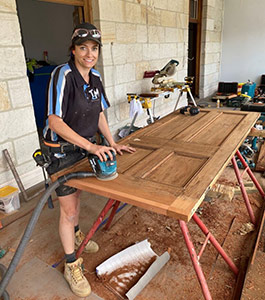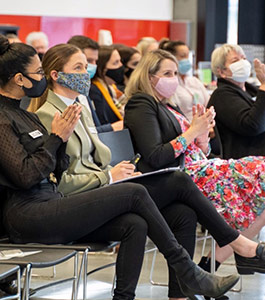Companies invest in antibias training each year, the goal is to create more inclusive workforces, and thereby more innovative and more effective. Studies show that well-managed diverse groups outperform homogeneous ones and are more committed, have higher collective intelligence, and are better at making decisions and solving problems. But research also shows that bias prevention programs rarely deliver unless the skills learned are practiced. So how can you, as an individual leader, make sure your team is including and making the most of diverse voices?
The first step is to understand the four distinct ways bias plays out in everyday work interactions:
- Prove it again: Some groups have to prove themselves more than others do.
- Tightrope: A narrower range of behaviors is accepted from some groups than from others.
- Maternal wall: Women with children see their commitment and competence questioned or face disapproval for being to career-focused.
- Tug-of-war: Disadvantaged groups find themselves pitted against one another because of differing strategies for assimilating—or refusing to do so.
Interrupting bias in your people
Bias in hiring has been extensively documented. In one study, “Jamal” needed eight more years of experience than “Greg” to be seen as equally qualified. Another found that men from elite backgrounds were called back for interviews more than 12 times as often as identical candidates from non-elite backgrounds. Other studies have found that women, LGBT+ candidates, people with disabilities, women in headscarves, and older people are less likely to be hired than their peers.
- Insist on a diverse pool: Whether you are working with recruiters or doing the hiring yourself, make it clear from the outset that you want true diversity, not just one female or minority candidate.
- Establish objective criteria: Define “culture fit,” and demand accountability. Implicit biases around culture fit often lead to homogeneity. Too often it comes down to shared backgrounds and interests that out-groups, especially first-generation professionals, won’t have. That’s why it’s important to clarify objective criteria for any open role and to rate all applicants using the same rubric.
- Limit referral hiring: If your organisation is homogeneous, hiring from within or from employees’ social networks will only perpetuate that. So, reach out to women and minority groups.
- Structure interviews with skills-based questions: Ask every person who interviewed the same questions and make sure that each question directly relates to the desired knowledge and skills you’ve outlined. Rate the answers immediately—that will allow you to compare candidates fairly on a pre-established rubric and prevent favouritism.
Interrupting bias in Your Day-to-Day
Even good leaders sometimes fall into bad habits when it comes to the daily management of their teams. Women report doing about 20% more “office housework.” on average, than their white male counterparts, whether it’s literal housework (arranging for lunch or cleaning up after a meeting), administrative tasks (finding a place to meet or prepping a PowerPoint) or emotional labour (“He’s upset—can you fix it?”).
- Set up a rotation for office housework, and don’t ask for volunteers: “I always give these tasks to women because they do them well” is a common refrain. This dynamic reflects an environment in which men suffer few consequences for bypassing or doing a poor job on low-value work, while women who do the same are seen as “prima donnas” or incompetent.
- Mindfully design and assign people to high-value projects: Sometimes we hear “It’s true, I keep giving the important assignments to a small group—but they’re the only ones with the skills to do them”
- Acknowledge the importance of lower-profile contributions: “Diversity” hires may lag behind their majority-member peers because they’re doing extra stuff that doesn’t get them extra credit. If your organisation truly prioritizes inclusion, then walk your talk.
- Respond to double standards: Pay close attention to the way people on your team talk about their peers and how they behave in group settings. For example, men tend to interrupt women far more often than the other way around; displays of confidence and directness decrease women’s influence but increase men’s.
- Ask people to weigh in: Women and first-generation professionals report being brought up with a “modesty mandate” that can lead them to hold back their thoughts or speak in a tentative, deferential way.
Interrupting bias in performance reviews
Your job as a manager is not only to get the best performance out of your team but also to encourage the development of each member. That means giving fair performance reviews, equal access to high-potential assignments, and promotions and pay increases to those who have earned them.
- Clarify evaluation criteria and focus on performance, not potential: Don’t arrive at a rating without thinking about what predetermined benchmarks you’ve used to get there. Any evaluation should include enough data for a third party to understand the justification for the rating.
- Separate performance from potential and personality from skill sets: In-groups tend to be judged on their potential and given the benefit of the doubt, whereas out-groups have to show they’ve nailed it. If your company values potential, it should be assessed separately, with factors clearly outlined for evaluators and employees.
- Level the playing field for self-promotion: The modesty mandate mentioned above prevents many people in out-groups from writing effective self-evaluations or defending themselves at review time. Counter that by giving everyone you manage the tools to evaluate their performance.
Organisational change is crucial, but it doesn’t happen overnight. Fortunately, you can begin educating ourselves, supporting workplace change, and interrupting our behaviours.




